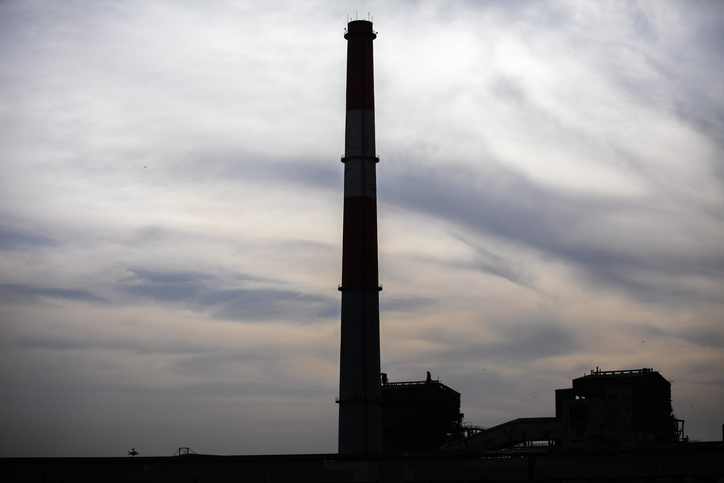Even when pollution levels were brought down because of the Covid-19 induced lockdowns, the levels of NO2 in the city’s air continued to rise at an alarming rate
During lockdowns, between April 2020 and April 2021 the capital witnessed a dramatic increase of NO2 in the atmosphere, revealed a report by Greenpeace India. According to satellite observations the increase was around 125%, NO2 is a dangerous air pollutant and its increasing levels have been associated with an increase in risks of asthma and other breathing problems in people.
Exhausts from motor vehicles, power generation, and industrial processes are the main contributors behind the rise in NO2 levels and it can severely impact the human respiratory system, circulatory systems and the brain, leading to increases in hospital admissions and visits to emergency rooms, and mortality. The report from Green Peace also noted that, had weather conditions been similar to 2020, the increase would have been even higher.
In Delhi, one in every three children have impaired lung functionality due to the levels of pollution in the city. Another report by Greenpeace has suggested that around 1.3 million children in India live with asthma due to chronic NO2 exposure and roughly 350 thousand new cases of asthma in children are reported each year. Asthma ranked in the top 20 conditions causing disability.
There is no data on deaths due to Asthma, however some estimates say that it accounts for one percent of total deaths in India. Moreover, the economic burden of living with Asthma is huge. A 2018 study found the annual cost of treatment of asthma Rs 18,737 and with an estimated 17 lakh people living below the poverty line in Delhi — this cost is huge.
There is increasing evidence of a link between the magnitude of the impact of Covid second wave and level of air pollution in the city. The report says, “The health impact of fossil-fuel related air pollution is severe and has been reflected time and again in several reports. Yet there has been little change in our reliance on fossil fuels, including coal, oil and gas. Increased economic activity is still largely coupled with toxic air pollution in most cities.”
Doctors have been saying that, impaired lungs due to pollution can be fatal as Covid-19 also attacks respiratory tracts. American Lung Association writes, “The lungs are the first body organ affected by Covid-19. In the early days of an infection, the novel coronavirus rapidly invades cells in our respiratory system. COVID-19 is thought to attack the epithelial cells lining the airways—that catch and clear out things like pollen and viruses—flooding our airways with debris and fluids.”
“The air quality levels in these cities are alarming. The cities and the people are already paying a huge price for our reliance on burning fossil fuels, this business as usual cannot continue.” said Avinash Chanchal, Senior Climate Campaigner, Greenpeace India. “People saw clean skies and breathed fresh air during the nationwide lockdown though it was an unintended consequence of the pandemic. The disruption caused by the pandemic is an opportunity to transition to cleaner, equitable and sustainable decentralised energy sources such as rooftop solar and clean and sustainable mobility which must be central to recovery efforts across cities. The recovery from the pandemic must not come at the expense of a return to previous levels of air pollution,”
“Motor vehicles and industries based on fossil fuel consumption are the major drivers of NO2 pollution in Indian cities. The governments, local administration and city planners must initiate the transition from privately owned vehicles to an efficient, clean and safe public transport system that is run on clean energy that of course, must provide Covid-19 related safety measures,” added Chanchal.
A 2016 report of IIT Kanpur said, “Nearly 52% of NOx emissions is attributed to industrial point sources (largely from power plants). These are followed by vehicular sources (36%) that occur at the ground level”.
The Delhi government filed a petition in June last month for the closure of 10 outdated thermal power plants in the Supreme Court. On 9 July, the Supreme court quashed the petition — bench of justices Navin Sinha and R S Reddy said, “It is amusing that the State of Delhi is coming up with a PIL against the Centre. Only observation, that is why we are saying.”
A March 31, 2021 notification by the Union Ministry of Environment, Forest and Climate Change (MoEF&CC) extended the timelines for complying with emission norms by coal-based thermal power plants. According to the Centre of Science and Environment (CSE) gives free licence to pollute.
The plea alleged that power plants significantly pollute Delhi’s air. It cited an order passed by the Central Pollution Control Board (CPCB) October 16, 2020 to quash these plants.Senior Advocate Colin Gonsalves, who was appearing for Delhi government said in application, “Time and again the Delhi Government had asked the concerned authorities to close down the units which have failed to comply with the emission norms and have resultantly caused excessive pollution in the capital region.”
List of power plants that plea sought to shut —
Nabha TPP
Harduaganj TPS
GH TPS
Dadri NCTPP
Rajiv Gandhi TPS
Panipat TPS
Talwandi Sabo TPP
Yamunanagar TPS
Indira Gandhi STPP
Ropar TPS





